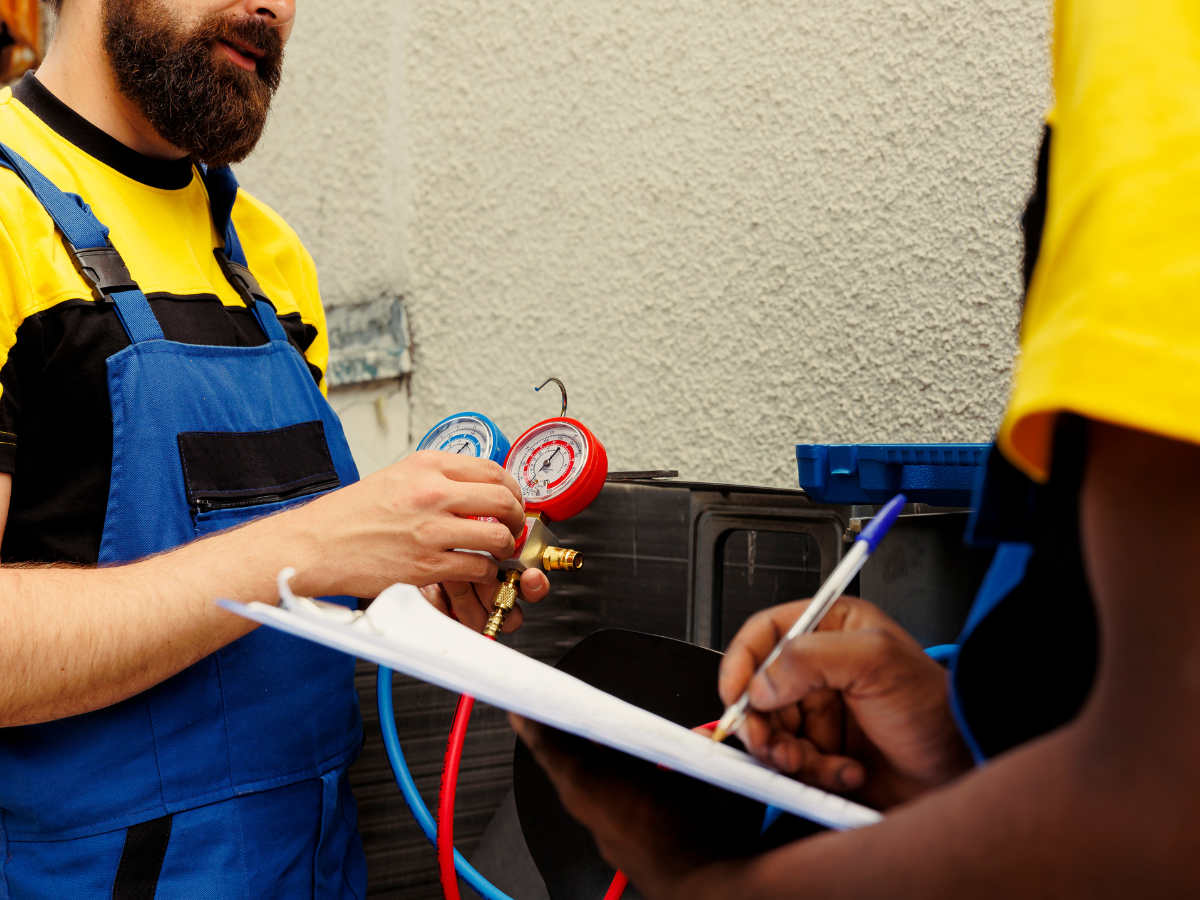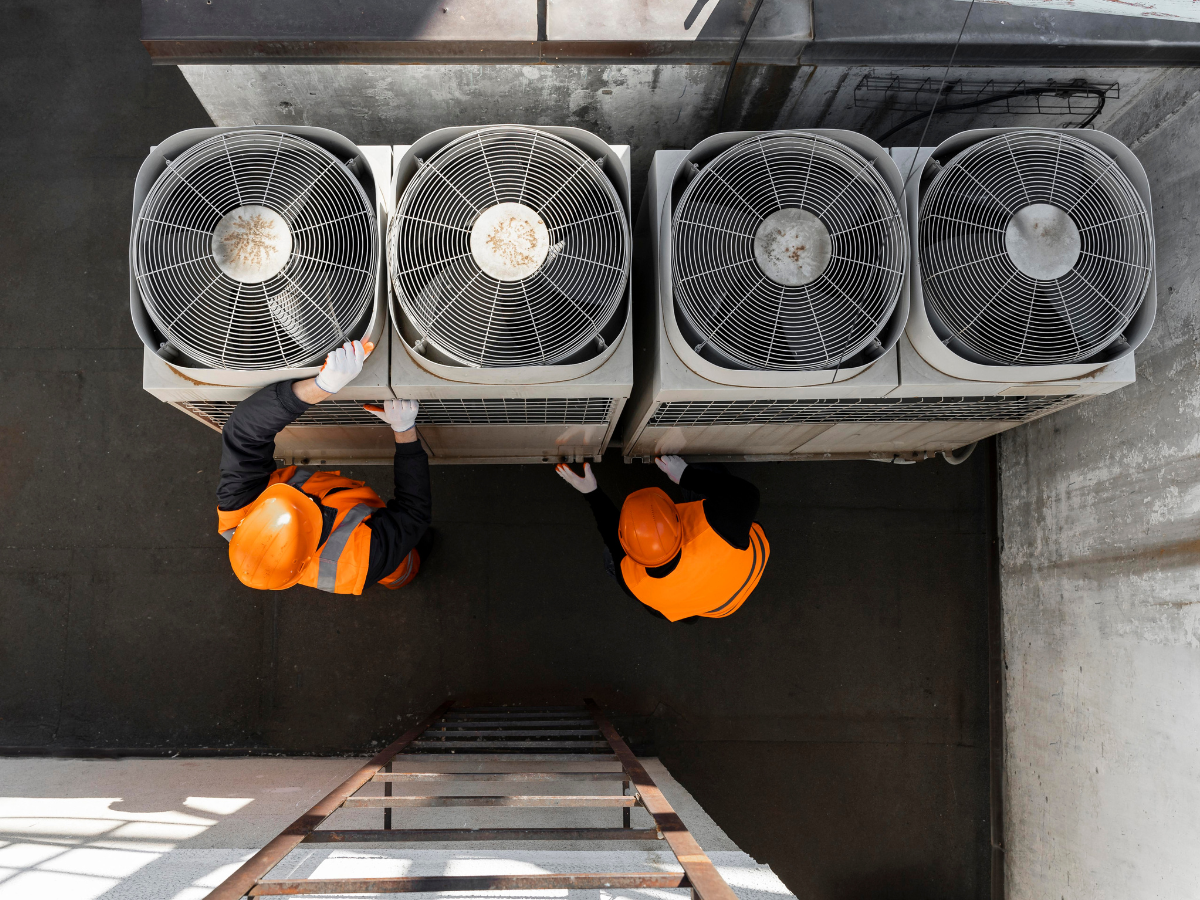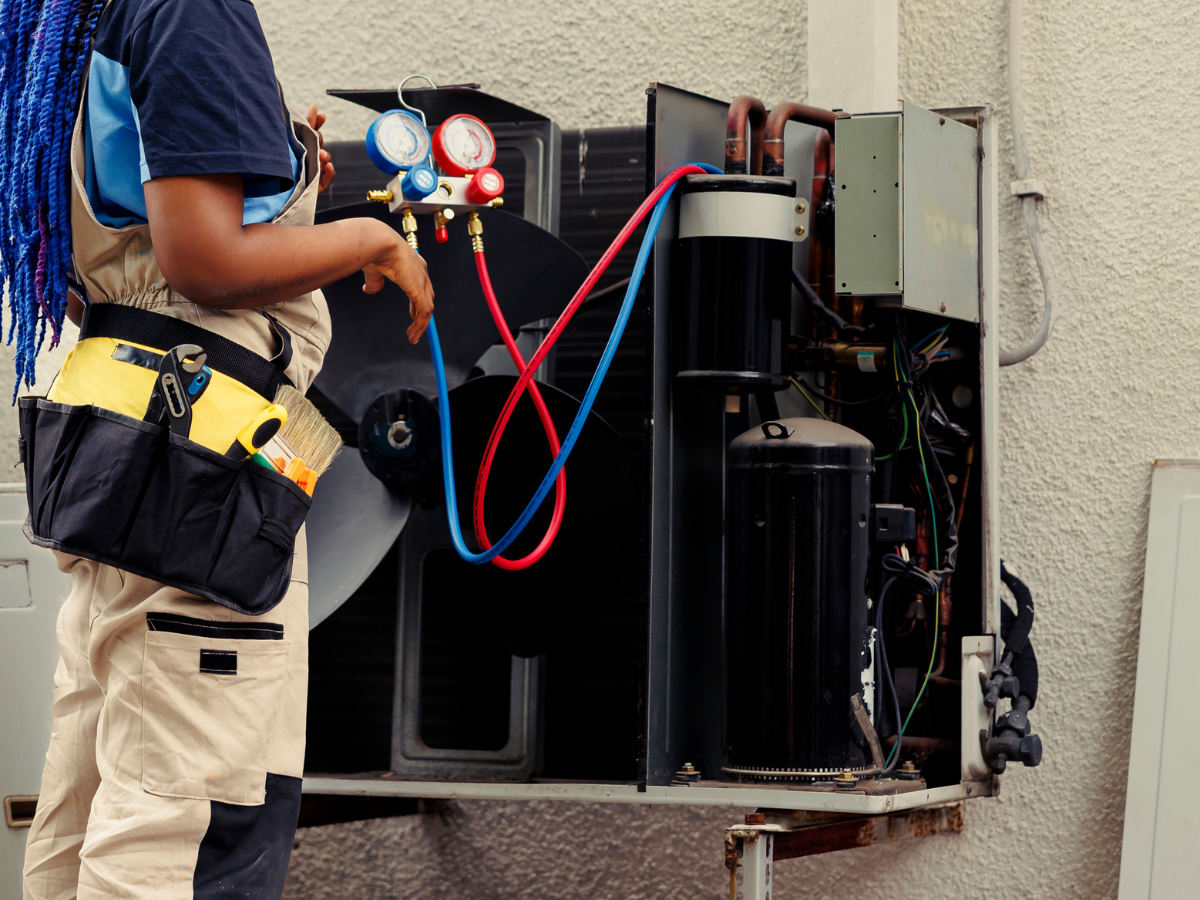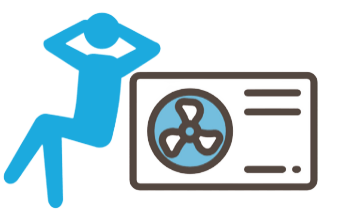Ensure Year-Round Comfort with Our Furnace Repair Service
As winter approaches, there’s one thing that stands between you and a warm, comfortable home: a properly functioning furnace. We all know that when a furnace breaks down, it can quickly turn a cozy space into an uncomfortable environment. This is why having reliable furnace repair service is essential to ensuring that your home remains at the perfect temperature, no matter what the season throws at you. At Comfort Zone HVAC, we understand the importance of a dependable heating system, which is why we offer top-notch services to keep your home comfortable all year round.
The Importance of Timely Furnace Repair Service
Furnaces are often taken for granted until they stop working, and by then, the problem could be worse than it might have been with a little proactive maintenance. Regular maintenance and timely repairs can extend the life of your furnace and help avoid the inconvenience of unexpected breakdowns. A furnace that’s running smoothly not only keeps you warm but also runs more efficiently, saving you on energy bills.
Furnaces are complex machines that rely on various components to keep the heat flowing. If one part fails, it could affect the whole system. That’s why when you notice issues with your furnace, whether it's strange noises, inconsistent heating, or increased energy bills, it’s crucial to seek professional help right away. This way, we can address the issue before it leads to bigger, costlier problems.
Signs Your Furnace Needs Repair
Knowing the signs that your furnace requires repair can help you avoid costly replacements and unnecessary discomfort. Here are some of the most common indicators that it’s time to call for professional assistance:
- Inconsistent Heating
If some rooms in your home are warmer than others or you notice that the temperature fluctuates wildly, your furnace might not be distributing heat properly. This could indicate a problem with your thermostat, ducts, or internal furnace components. - Strange Noises
A furnace should operate quietly. If you hear banging, grinding, or screeching sounds, these could be signs of loose or worn-out parts inside the furnace. Don’t wait for the noise to go away on its own, as ignoring it can lead to more extensive damage. - Increased Energy Bills
A sudden spike in your heating costs can indicate that your furnace is working harder than necessary to keep your home warm. This could be due to a clogged air filter, a malfunctioning thermostat, or other inefficiencies that require attention. - Furnace Doesn’t Turn On
If your furnace refuses to turn on or cycles on and off too frequently, there may be an issue with the ignition system or the power supply. This problem can prevent your home from reaching the desired temperature. - Yellow Pilot Light
The pilot light on a gas furnace should be blue. If it’s yellow or flickering, this could be a sign of a carbon monoxide leak, which is dangerous and requires immediate professional attention. - Bad Smells
A burning smell when the furnace first kicks on could indicate dust buildup or a more serious problem. If you detect a rotten egg or chemical smell, it’s important to shut off the furnace and call a repair service immediately, as it may signal a gas leak.
The Process
- Thorough Inspection
Our technician will start by inspecting your furnace from top to bottom. We check the thermostat, inspect the burner, and evaluate the air filter, ductwork, and other components. We’re thorough because we want to identify not just the immediate issue but any potential problems that could arise in the future. - Accurate Diagnosis
After our inspection, we’ll provide you with a clear, accurate diagnosis of the problem. We believe in transparency, so we’ll walk you through the issue and explain the best options for repair. If your furnace is still under warranty, we’ll also make sure to honor that. - Efficient Repairs
Our technicians are highly trained to handle all types of furnace repairs. Whether it’s replacing a faulty part, fixing a malfunctioning thermostat, or cleaning clogged ducts, we get the job done quickly and efficiently to restore comfort to your home. - Preventive Advice
We don’t just fix your furnace and leave. We’ll also offer advice on how to maintain your furnace for the long term. Simple steps like changing the air filter regularly and scheduling annual maintenance can help avoid future breakdowns and keep your furnace running smoothly. - Post-Repair Testing
After completing the repairs, we test the furnace to ensure everything is functioning correctly. We want you to have peace of mind knowing that your furnace is ready for the season ahead.
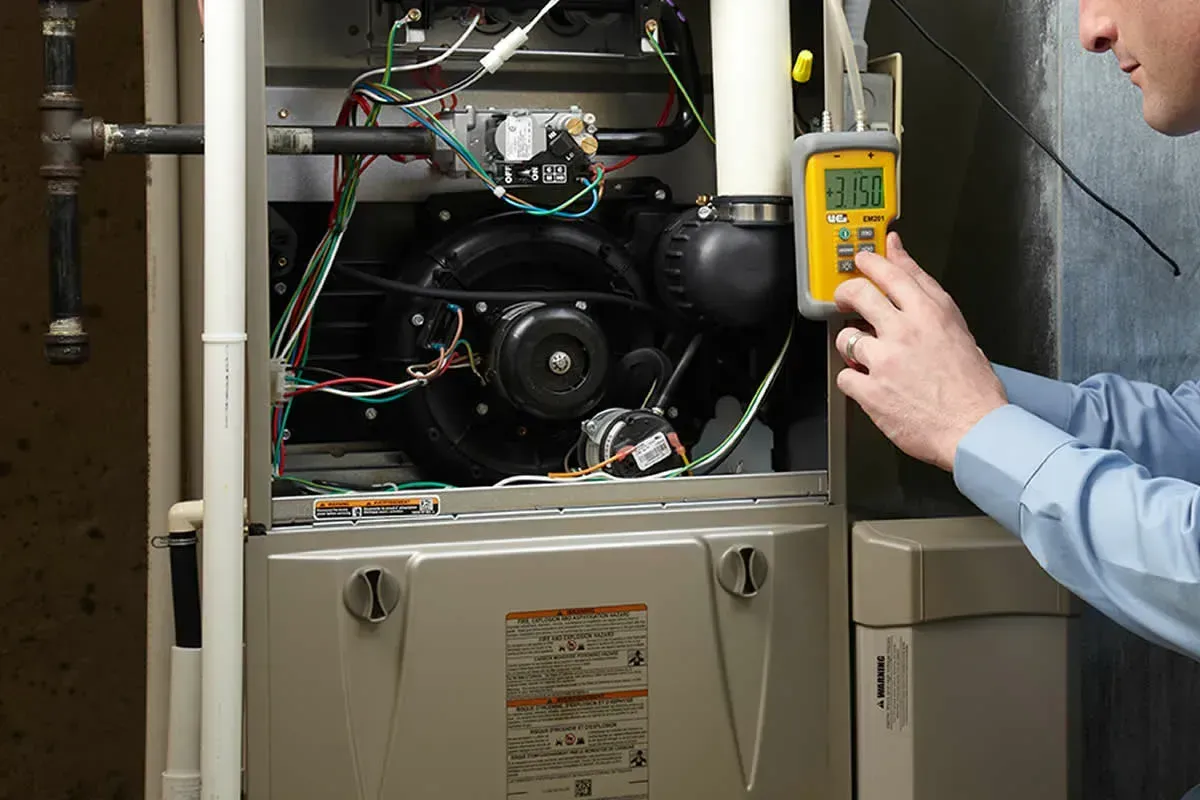
Trusted Repair Experts
We pride ourselves on being more than just another heating company. As a trusted part of the community, we offer expert furnace repairs with a commitment to excellence. Here’s why our customers choose us time and time again:
- Expertise and Experience
Our technicians are highly trained and experienced in handling all types of furnace issues. Whether it’s a simple repair or a complex problem, we have the knowledge and skills to get your furnace back in working order. - Reliable Service
We understand how important it is to have a furnace that works reliably. That’s why we always show up on time, ready to get the job done right. You can rely on us to provide honest, efficient service that meets your needs. - Affordable Pricing
We believe that quality furnace repair should be affordable. Our pricing is competitive, and we offer transparent estimates so you know exactly what to expect before any work begins. We’ll work within your budget without sacrificing quality. - Trustworthy and Professional
We’ve built our reputation on trust, professionalism, and integrity. Our technicians are fully licensed, insured, and background-checked, so you can feel confident knowing that we’re treating your home with the utmost care and respect. - Customer Satisfaction
We don’t just aim to fix your furnace; we aim to exceed your expectations. We take pride in the feedback we receive from our satisfied customers, and we always strive to provide the best service possible. Your comfort is our priority.
Furnace Care Tips
While furnace repairs are sometimes unavoidable, there are steps you can take to reduce the likelihood of a breakdown. Here are some tips for keeping your furnace running smoothly:
- Schedule Regular Maintenance
Just like your car, your furnace needs regular maintenance to keep it running at its best. We recommend scheduling an annual tune-up with our team to ensure your furnace is in optimal condition. During the tune-up, we’ll inspect, clean, and adjust components to keep things running efficiently. - Change the Air Filter
A clogged air filter can cause your furnace to work harder and lead to overheating or premature failure. We recommend changing the filter every 1-3 months, depending on usage, to maintain good airflow and system efficiency. - Keep Vents Clear
Make sure that your furnace vents and registers are free from obstructions like furniture or rugs. Blocked vents can restrict airflow and force your furnace to work harder, leading to higher energy bills and potential damage. - Seal Drafts
Keep warm air inside your home by sealing drafts around windows and doors. This simple step can help your furnace maintain a consistent temperature, reducing the workload on your system and lowering energy costs. - Consider Upgrading
If your furnace is old and requires frequent repairs, it might be time to consider an upgrade. Newer models are more energy-efficient and reliable, saving you money in the long run.
Warmth Guaranteed
Furnace repair service is essential for maintaining a comfortable, warm home during the colder months. Our HVAC repair service ensures that your heating system is reliable and efficient, keeping your home at the perfect temperature. Whether you’re experiencing a minor issue or a major breakdown, our experienced technicians are ready to help. We’re committed to delivering top-tier service with integrity, affordability, and professionalism.
Don’t let furnace problems disrupt your comfort. Reach out to us today at Comfort Zone HVAC, and let us ensure your furnace stays in optimal condition so you can enjoy a warm, cozy home all year long.
You might also like
